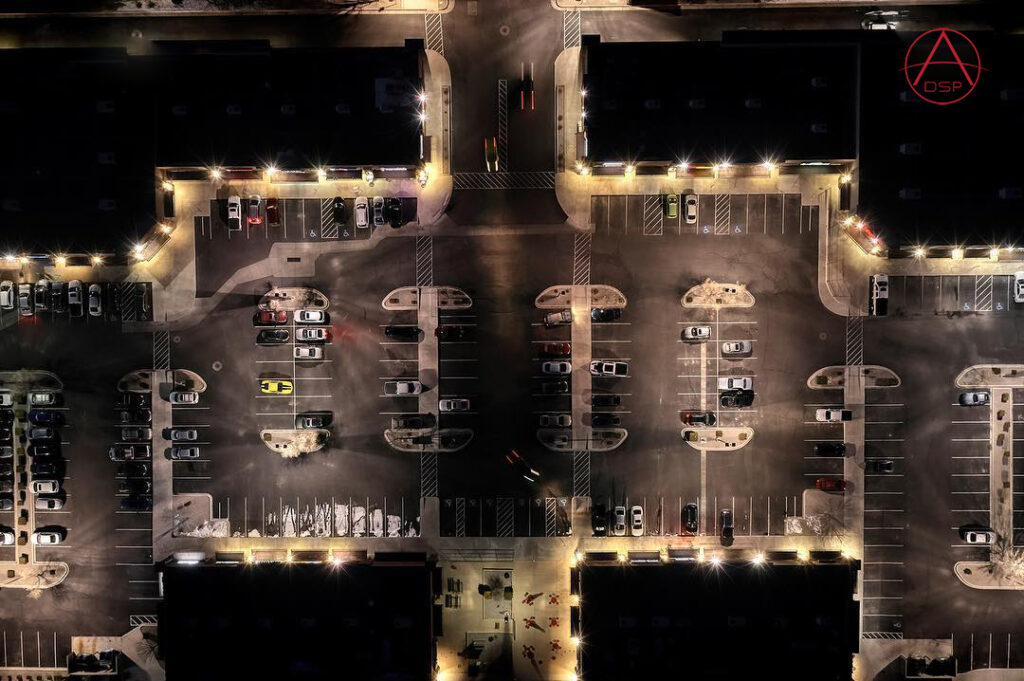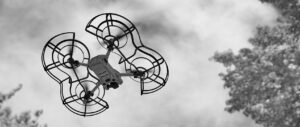Part of the new rules put out on 12/28/20 by the FAA include night operations without a waiver, operations over people without a waiver, and recurrent training instead of recurrent testing.
For night ops, it should be fairly straight forward.

Instead of requiring a waiver to fly at night under 107 rules, it will be included in the Remote Pilot Initial and Recurrent tests. And this is a direct result of the multitude of safe operations that were conducted with 107 Pilot flying under their 107.29 waivers. So safe flying obviously pays off. And that’s something we should all keep in the back of our minds when we’re in the air.
The new wording for 14 CFR 107.29 will be amended to allow operations at night if:
- the small unmanned aircraft has an anti-collision light that is visible for 3 statute miles, and
- the remote pilot in command has completed an updated knowledge test or recurrent training, as applicable, to ensure familiarity with the risks and appropriate mitigations for nighttime operations.
And the necessity for the lights can be waived if necessary. But if you are using anti-collision lights, they must strobe in such a fashion as “to flash at a sufficient rate to avoid a collision”. In prior wording the strobe aspect wasn’t clarified. It now is. So you have to use strobes.
The FAA used this new rule to further clarify the definition of anti-collision lights. There was a few comments asking for further clarification. They are still not certifying the lighting required though. That will still be up to the individual Pilot In Command to ensure each strobe they use passes that test. It can be a manufacturer’s test, or one you provide yourself. Personally, I suggest testing it yourself and keeping records on how and when.
When I test new anti-collision strobes I have a place near me with an exact three mile line of site from one hill to another. I have someone turn the lights on and off, and also point them up at 45°. I then record the entire thing on a video camera from my vantage point. That way there is no question they pass. And in your tests, make sure they are visible at 45° or so. If they’re only visible with they point directly at your position, they’re not as visible to manned aircraft coming up on your drone. While they would satisfy the letter of the law, I’d question if they satisfy the spirit. And if you can’t see them at 45°, they’re definitely less safe. And we all want to be safe.
While there is still no requirement for color of position on the UAS, the FAA does clarify that the strobes are for manned aviation to see the UAS at night, not for the PIC to maintain VLOS So logic would dictate that they be placed on the top of the UAS.
And if you’re going to put them on the top of the UAS, make sure they’re secure. When I worked with people getting their 107.29 waiver, I always suggested that double check that they’re secure not only for the preflight check, but at each subsequent battery change. The last thing you want is a strobe falling off and hitting a prop.
So how will you get that training or testing?
Remote Pilots must complete an updated aeronautical test or updated training to be able to fly at night under 107 rules. Those tests and trainings will asses the pilot’s knowledge of anti-collision light requirements, when the anti-collision light is allowed to be dimmed, how to determine aircraft position, obstacle avoidance with lack of visual cues, what aircraft may be conducting low level night operations, night physiology, circadian rhythm effects, and other topics.
This will all become available on the FAA website 45 days after publication if the Federal Register. If you’re currently flying night ops under a 107.29 waiver will have 60 days to continue using that waiver. This gives those of use flying under that waiver time to get the new training or test. All 107.29 waivers will be terminated 120 days from publication date.
There is also no requirement for a Visual Observer. This is a departure from every 107.29 waiver I’ve seen or helped write. Personally, I’d never fly at night without one, but now it’s not longer a requirement. Nor does that person need to be trained.
In order to provide the training and/or testing required, the FAA has Remote Pilot – Small Unmanned Aircraft Systems Study Guide (FAA-G-8082-22), and renamed it Small Unmanned Aircraft Systems Operating Handbook (FAA-H-8083-24). Release date on that is to be determined. But expect it soon. Obviously.
New wording for 14 CFR 107.29:
§ 107.29 Operation at night.
(a) Except as provided in paragraph (d) of this section, no person may operate a small unmanned aircraft system at night unless—
(1) The remote pilot in command of the small unmanned aircraft has completed an initial knowledge test or training, as applicable, under § 107.65 after [INSERT DATE 44 DAYS AFTER DATE OF PUBLICATION IN THE FEDERAL REGISTER]; and
(2) The small unmanned aircraft has lighted anti-collision lighting visible for at least 3 statute miles that has a flash rate sufficient to avoid a collision. The remote pilot in command may reduce the intensity of, but may not extinguish, the anti-collision lighting if he or she determines that, because of operating conditions, it would be in the interest of safety to do so.
(b) No person may operate a small unmanned aircraft system during periods of civil twilight unless the small unmanned aircraft has lighted anti-collision lighting visible for at least 3 statute miles that has a flash rate sufficient to avoid a collision. The remote pilot in command may reduce the intensity of, but may not extinguish, the anti-collision lighting if he or she determines that, because of operating conditions, it would be in the interest of safety to do so.
One other nugget.
107.65 Recurrent requirements:
No more scheduling your 107.65 recurrent in-person test. The FAA has determined that training be required every 24 months instead of actual testing. And that will include the night ops knowledge. However, there will no longer be a different set of questions between the initial and recurrent test or training. All subjects on the initial test will be covered in the recurrent training.
This training will ensure that Remote Pilots will maintain familiarity with sUAS operations. An additional benefit is that this will be done online which provides a cost free option. It also allows more flexibility when the FAA feels the need to adapt training for regulatory or technological advances in the UAS industry.
45 days after publication, the FAA will provide free online recurrent training for all remote pilots.
And some miscellany.
The FAA confirms that there is no need for 107 pilots to take a practical exam.
“The Agency continues to find that formal training, a practical test for the issuance of a part 107 remote pilot certificate, and testing requirements similar to those for part 61 commercial pilot certificates, are not necessary.”
To do otherwise would be inconsistent with the original risk-based framework of the 2016 final rule.
There are also a number of minor changes to wording and technical aspects for 333 holders, Remote PIC holders, and operations of multiple sUAS. But they’re all pretty minor, and in the interest of brevity, we won’t go into details here.
Additionally, if you’re truly interested in reading the comments, you can really see which other aviation groups support the UAS community, and which don’t. And it’s obvious that the FAA took the time to read the comments, and applied logic and reasoning to this final rule.
A special thanks to KC Sealock for his FPV input, Taylor Albrecht with TNL Aviation and President of the Central Colorado UAS Club, and Desi Ekstein with Women and Drones. All invaluable input.
OOP and Night Ops Exec Summary.
Published OPP and Night Ops Final Rule: https://www.govinfo.gov/content/pkg/FR-2021-01-15/pdf/2020-28947.pdf
A good in depth article in Inside Unmanned Systems.




so…..I just received my 107.29 the second week of December — just a few days ago and the waiver expires in 4 years. well I guess now in 60 days??? Wow!
Timing is everything. At least you have it for now. And you won’t have to be one of the fist in line to get the new training for the night ops.
okay — went back to review — 120 days — not much better — I worked so hard for that waiver!!!
So now when you take your initial Part 107 exam, and the question about being allowed to fly 30 minutes after sunset,Twilight time. Is this question still valid for 2021?
This is a good questions Michael.
The FAA is in the process of revamping the questions for the initial and “UAS Recurrent Training Course”. But logic dictates that questions like the one in your example would be removed from the initial and recurrent.
Keep these questions coming!!!
Perhaps the question will be changed from “When you’re allowed to fly”, to “what do you need onboard, starting 30 minutes from sunset”…..
We’ll see how it all washes out. We still have time on this. And once the pieces are in place, we’ll make sure to get it all out ASAP.